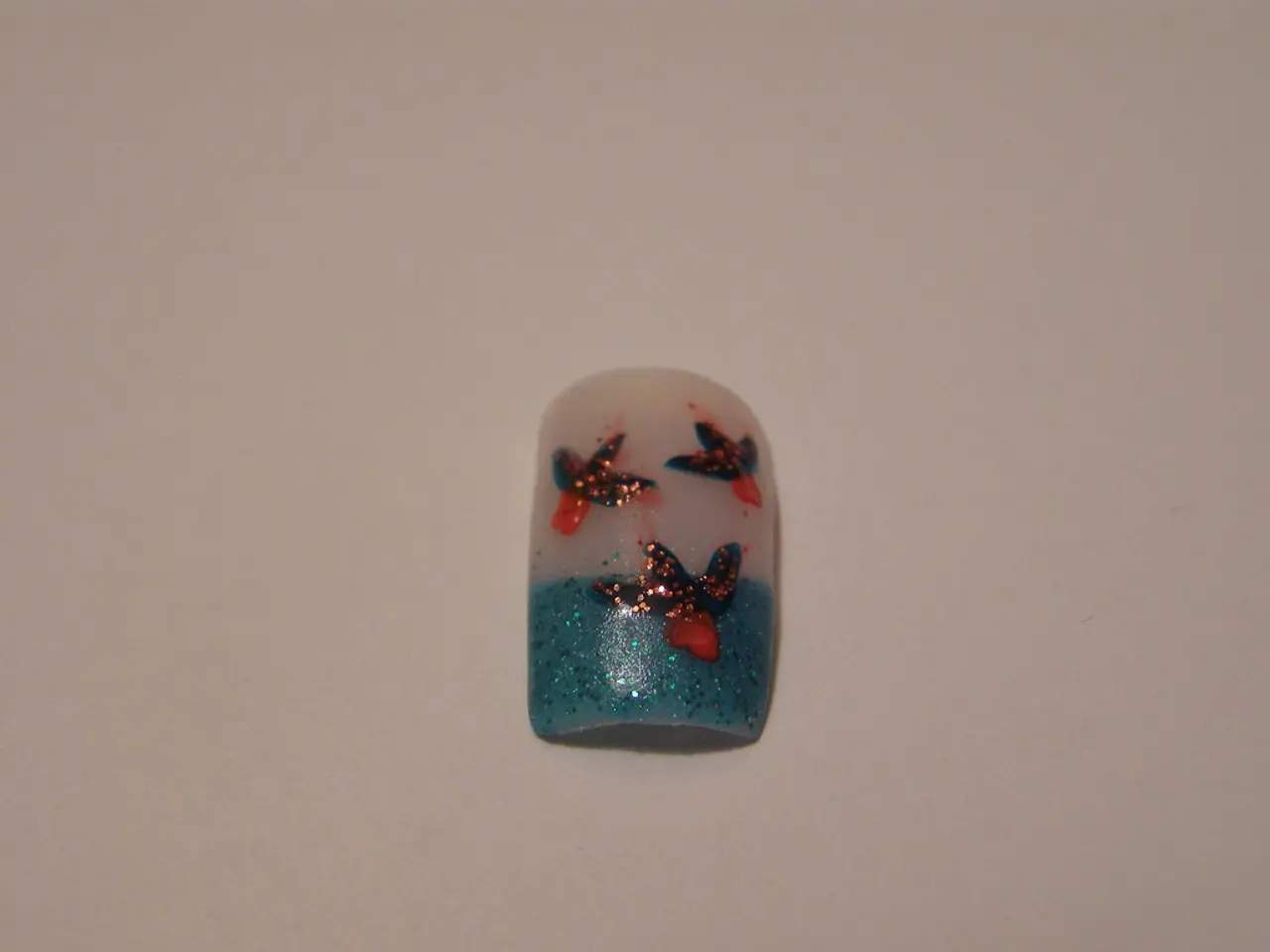Treatment, complexities, and doctor visit necessities for infected hangnails
Infected hangnails, a common affliction affecting both fingernails and toenails, can cause discomfort and concern. This article provides a step-by-step guide on treating infected hangnails at home and knowing when to seek medical help.
Home Treatment for Infected Hangnails
The first line of defence against infected hangnails is home treatment. Here's a simple routine to follow:
1. Soak the affected finger or toe in warm water, ideally with antibacterial soap or salt, for about 15-20 minutes, two to three times a day. This helps soften the skin and draw out infection.
2. After soaking, apply an over-the-counter antibiotic cream to help prevent or control infection.
3. If the edge of the hangnail can be gently lifted, place a small piece of clean cotton under it to help it grow outward and relieve pressure.
4. Keep the area clean and protected with a bandage, changing the dressing daily to maintain hygiene and reduce irritation.
5. Avoid biting, picking, or cutting the hangnail aggressively, as this may worsen infection.
When to Seek Medical Help
While home treatment usually resolves mild infected hangnails, there are instances when professional medical care is necessary. Seek medical help if:
- The infection worsens, such as increasing redness, swelling, pus formation, throbbing pain, or spreading redness around the finger or toe. - There is an abscess (a collection of pus), as only a healthcare provider should perform drainage to avoid complications. - People with diabetes, poor circulation, or other health issues should consult a doctor promptly even with mild symptoms. - If home remedies don’t improve symptoms after a few days, or if recurrent infections occur, seek medical advice for possible prescription antibiotics or further treatment.
Additional Home Remedies
In addition to the above steps, natural antiseptics like tea tree oil or soothing agents such as aloe vera gel may reduce inflammation and support healing. However, they should be used cautiously and not replace conventional treatments.
In conclusion, a combination of warm water soaks, topical antibiotics, and proper hygiene usually resolves mild infected hangnails at home. Avoid self-draining abscesses and consult a healthcare professional if symptoms are severe, worsening, or persistent. This approach ensures safe and effective healing while preventing complications.
Remember, prevention is better than cure. To prevent a hangnail from becoming infected, avoid peeling it, trim the hangnail down with nail clippers, keep the fingernails clean, moisturize regularly, avoid biting the nails, and make sure the hands do not stay wet for too long. Additionally, the RICE method (rest, ice, compression, and elevation) can be used to reduce pain and swelling from an infected hangnail.
[1] Mayo Clinic. (2021). Paronychia. Retrieved from https://www.mayoclinic.org/diseases-conditions/paronychia/symptoms-causes/syc-20353099 [2] American Academy of Dermatology. (2021). Infected Nail. Retrieved from https://www.aad.org/public/diseases/a-z/infected-nail [3] Healthline. (2020). Home Remedies for Infected Nail. Retrieved from https://www.healthline.com/health/home-remedies-for-infected-nail#tea-tree-oil
- Infected hangnails can lead to discomfort and worry, but home treatment can help alleviate the issue.
- Soaking the infected area in warm water with antibacterial soap or salt can soften the skin and draw out the infection.
- After soaking, apply an over-the-counter antibiotic cream to aid in infection prevention or control.
- If possible, gently lift the edge of the hangnail and place a small piece of clean cotton under it to promote growth and relieve pressure.
- Keep the area clean and covered with a bandage, changing it daily for hygiene and to reduce irritation.
- Avoid biting, picking, or cutting the hangnail aggressively to prevent further infection.
- If the infection worsens, seek medical help immediately, as it may indicate a more severe issue.
- Signs of worsening infection include increased redness, swelling, pus formation, throbbing pain, or spreading redness around the finger or toe.
- An abscess, a collection of pus, should only be drained by a healthcare provider to avoid complications.
- People with diabetes, poor circulation, or other health issues should consult a doctor even with mild symptoms.
- If home remedies don't improve symptoms after a few days, or if recurrent infections occur, seek medical advice for possible prescription antibiotics or further treatment.
- Natural antiseptics like tea tree oil or soothing agents such as aloe vera gel may help reduce inflammation and support healing but should be used cautiously and not replace conventional treatments.
- Proper hygiene, regular moisturizing, avoiding peeling and biting, and the RICE method (rest, ice, compression, and elevation) can help prevent a hangnail from becoming infected.
- Preventive measures can reduce the risk of developing infected hangnails in the first place.
- Science and medical advancements continue to improve our understanding of various chronic diseases such as diabetes, obesity, dermatitis, macular degeneration, multiple sclerosis, and Crohn's disease.
- The workplace-wellness initiative focuses on promoting health and wellness in the workplace by addressing mental-health, skin-care, nutrition, fitness-and-exercise, and various medical-conditions like chronic diseases and respiratory-conditions.
- Autoimmune disorders like psoriasis, psoriatic arthritis, type 1 diabetes, and HIV affect millions worldwide and require ongoing therapies and treatments to manage symptoms.
- Neurological disorders like Alzheimer's, depression, and hearing loss can impact a person's daily life and quality of life, making medical intervention essential.
- Eyes, ears, and digestive health are crucial components of overall health and wellness, with conditions like glaucoma, age-related macular degeneration, ulcerative colitis, and Crohn's disease needing regular monitoring and management.
- Cardiovascular health is an important aspect of health and wellness, with conditions like hypertension, high cholesterol, and heart disease requiring lifestyle changes and medical treatment for management.
- Skin conditions like atopic dermatitis, eczema, and psoriasis can impact a person's self-esteem and daily life, making early detection and treatment crucial.
- Stay informed about general news, crime, and justice, but always prioritize your health and wellness, seeking professional medical help as needed for chronic diseases, mental-health issues, and acute conditions like infected hangnails.




